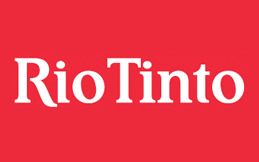Rio Tinto chief executive J-S Jacques said “This was a solid quarter for production, including record output at our bauxite operations. Iron ore production was in line with last year, although iron ore shipments were impacted by an acceleration in our rail maintenance programme following poor weather in the first quarter. We believe our focus on capital discipline, maximising cash flow from operations, driving productivity and portfolio shaping will continue to support the delivery of strong cash generation and shareholder returns.”

Highlights
- Pilbara iron ore shipments were 77.7 million tonnes in the second quarter (100 per cent basis). Shipments were impacted by accelerated rail track maintenance.
- Iron ore shipments guidance for 2017 is around 330 million tonnes (previously 330 to 340 million tonnes). This takes into consideration first half production and further rail maintenance in the second half to improve track conditions.
- Record quarterly bauxite production of 12.9 million tonnes was seven per cent higher than the corresponding quarter of 2016, driven by strong production at Weipa and Gove. Third party shipments of 8.0 million tonnes were achieved in the second quarter.
- Mined copper production recovered compared to the previous quarter, however was six per cent lower than the second quarter of 2016 as Escondida continued to ramp up following a labour strike.
- Titanium dioxide slag production increased by 34 per cent compared to the second quarter of 2016, reflecting higher market demand.
- On 26 June 2017, Rio Tinto confirmed Yancoal Australia as its preferred buyer of Coal & Allied, after an improved offer from Yancoal of $2.69 billion. Rio Tinto shareholders have since approved the sale. The sale is expected to complete in the third quarter of 2017.
All figures in this report are unaudited. All currency figures in this report are US dollars, and comments refer to Rio Tinto’s share of production, unless otherwise stated. To allow production numbers to be compared on a like-for-like basis, production from asset divestments completed in 2016 have been excluded from Rio Tinto share of production data but assets sold in 2017 remain in comparisons.
